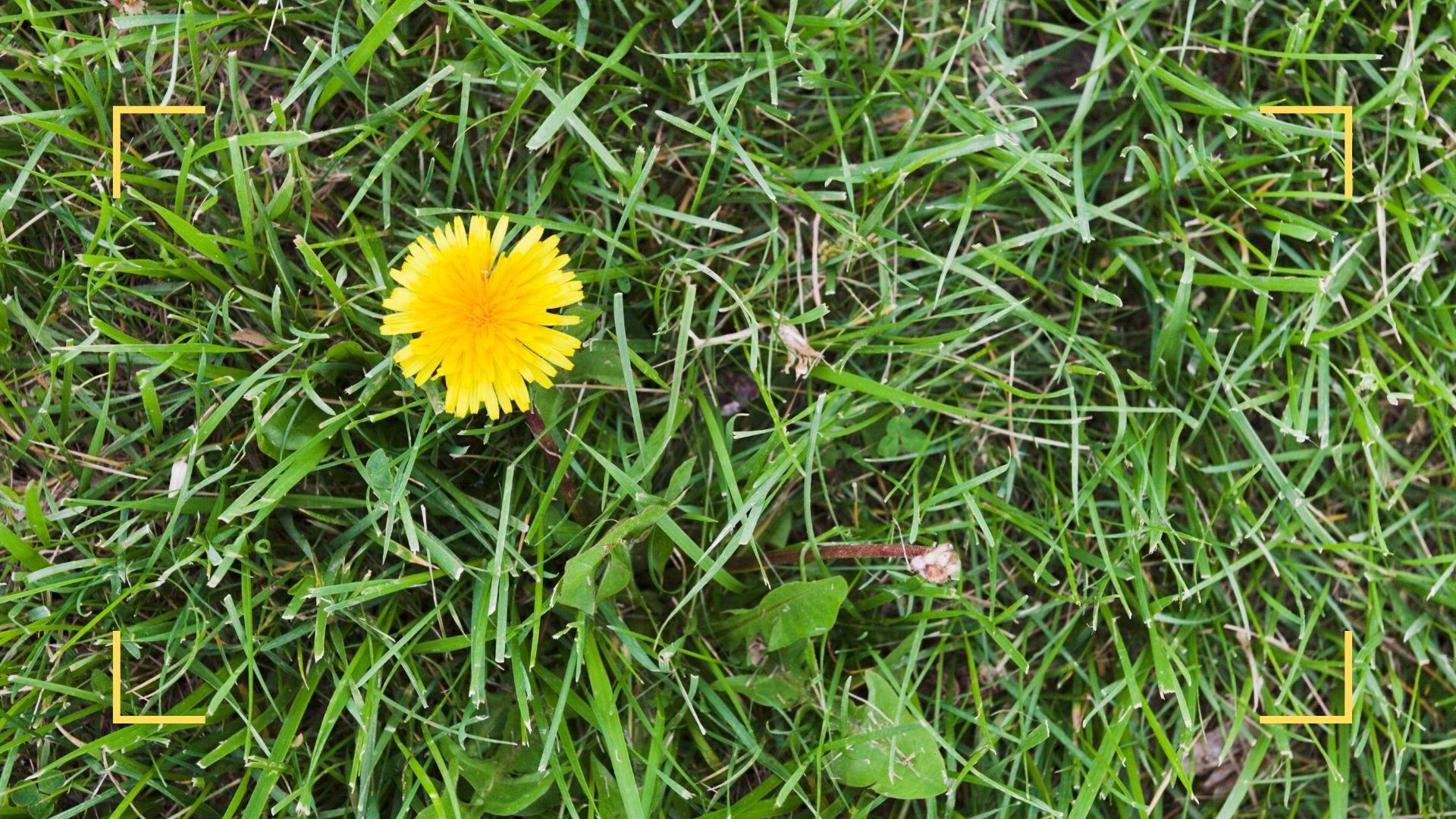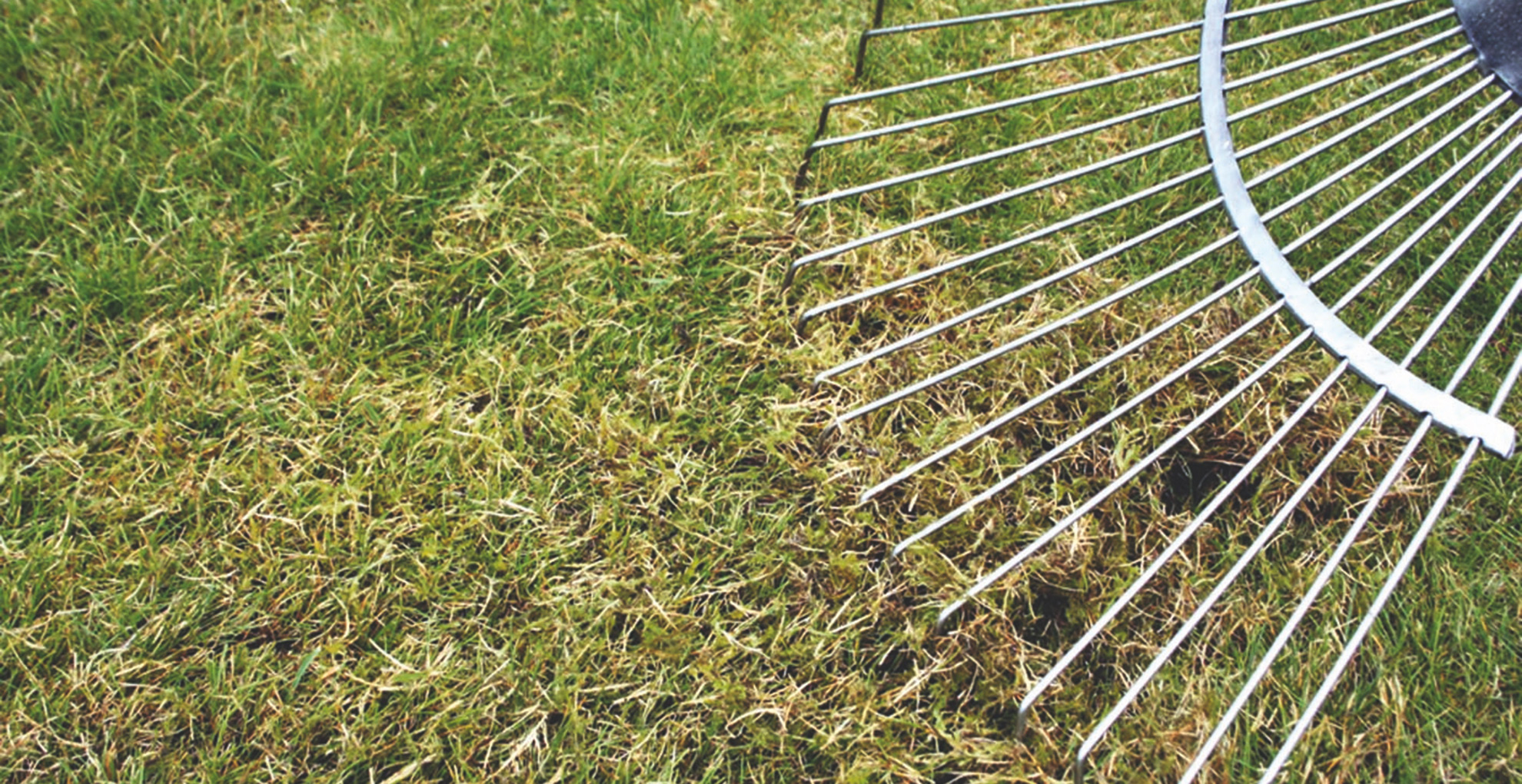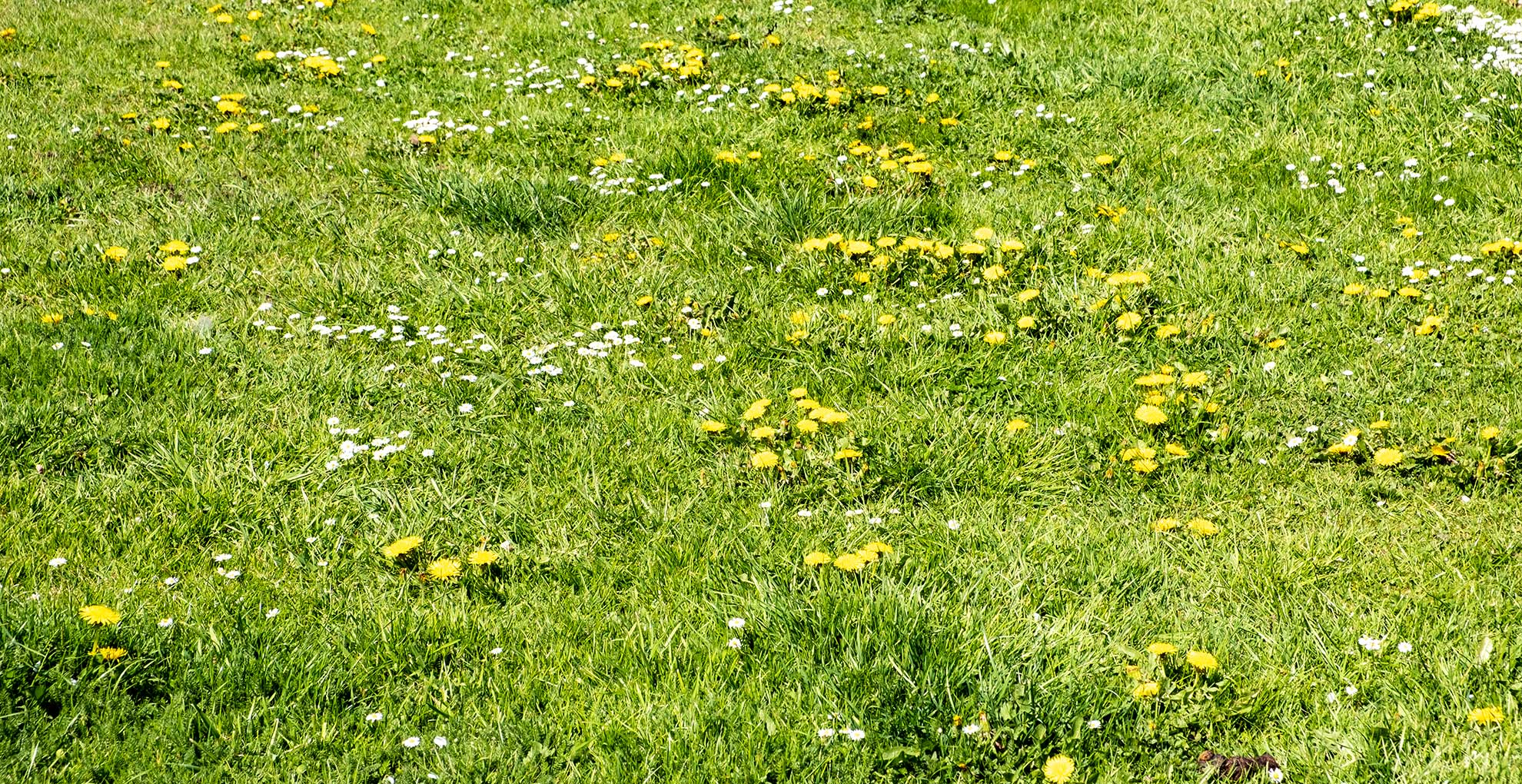Experts explain how to get rid of weeds in your grass without ruining the lawn
Remove weeds with these expert-approved methods to deal with weeds once and for all


Need to know how to get rid of weeds in your grass without ruining the surrounding lawn? You're in the right place because we have all you need to know, including how to remove weeds with efficiency and how to prevent them from returning.
Weeds are the unwanted guest in any budding garden trend, littering thriving lawns with a tendency to take over if left untreated so it's important to make weeding part of your essential maintenance chores alongside fertilizing your lawn and factoring in how often you should mow.
So how do you get rid of weeds in your grass for good? Luckily there are a few easy methods to solve this common gardening dilemma, as our team of lawn care experts explains below.
How to get rid of weeds in grass effectively
Weeds are a pest for even the most well-established gardener. From dandelions and daisies to clovers, weeds are easily identifiable when they sprout up on your impeccable green lawn. As soon as you spot them it's time to take action.
"Removing lawn weeds as and when they appear is an effective way to deal with them," states Chris McIlroy, a grass expert at The Grass People.
There are two main options for removing weeds from your grass. The first is to manually dig out the weeds or the second is to apply a chemical weed killer to tackle a wider spread problem.
"You can use both methods if your lawn is established (at least 6 months old) but do not use any feed, weed, or moss killer on a newly seeded lawn as this can have an adverse effect," Chris warns.
Sign up to our free daily email for the latest royal and entertainment news, interesting opinion, expert advice on styling and beauty trends, and no-nonsense guides to the health and wellness questions you want answered.
There are also several preventative measures you can take to get rid of weeds, as you'll discover below.
1. Remove the root

The key when weeding in any patch is to remove the entire root of the plant. Breaking the root above soil level will in essence get rid of the weed from view but it won't get rid of it entirely because it will grow back before you know it - a valuable gardening tip to know.
To remove it entirely you can pull it by hand or using a hand trowel, gently levering the roots to loosen their securement under the soil. You may need to use a specialist tool if the roots are really holding firm – but fear not, if done right this won't damage the surrounding lawn.
"Most of the common weeds that appear in lawns, dandelions, buttercup, and daisies, for example, will dig out easily if the soil is moist," explains Jonathan Hill, a lawn expert at Rolawn.
"When digging a weed out, it is best to use a sharp knife or weed-digging tool (both can be found in a garden center). Slide the knife down under the weed and cut off the root. Then, pull the weed out and discard it away from your turf. If you leave the weeds on or near your turf, they could drop their seeds, and your problem will grow again."
Chris adds, "Filling in the hole that’s left behind with fresh compost and lawn or grass seed makes for a quick fix."
2. Use a chemical weed killer
If your lawn is hugely infested with weeds it might not be practical to remove each by hand, or you might just need a little help. You want to seek a recommended weed killer that is especially for lawns because the one thing you don't want to do is risk killing the surrounding grass as a result of weeding.
"Alternatively (than removing by hand), you can apply chemicals such as Feed, Weed and Mosskiller at the Grass People which will provide nutrients to the grass and root system while killing off any undesirables in the lawn," says Chris.
Note that this is not an instant solution. "This weed killer usually takes around two weeks to work and can be easily recognized by the moss and weeds turning black. Simply scarify out the dead grasses and reseed if necessary."
When using any chemicals for household tasks it's essential to read the packaging carefully and follow the instructions recommended. “Harsh chemical solutions can be helpful in certain circumstances, but you should always be cautious when using them in case they cause damage to other living things which have made your garden their home," warns Chris.
3. Keep your lawn in good health

Keeping your lawn in tip-top condition is a great way to prevent weeds in the first instance. "The best way to get rid of weeds in your lawn or grass areas is to stop them from ever taking root in the first place," says Chris. "Keeping your grass in the best possible condition will help it keep a strong barrier to weeds and will keep it looking pristine for years to come.”
Avoiding common lawn care mistakes will ensure healthier grass, from avoiding scarifying wet grass to knowing how long to water your lawn during different climates are an example of essential tasks to get right.
4. Change how you mow
When hydrating the grass it matters when you water a lawn, the same applies to how you mow because the act is also interchangeable and highly impactful for the health of your grass.
While leaving grass cuttings on top of the grass is good for nutrients when you first cut grass after winter it can prove problematic if your grass is full of weeds.
During the spring months, up until early summer, certain weeds such as dandelions will be setting seed so by cutting and disturbing them you are effectively reseeding the weeds directly back into the soil where your grass grows.
Remove fresh grass cuttings or use the bagging attachment on your mower to collect the cuttings as your mow to eradicate the problem altogether.
5. Overseed your turf
When planting grass seed the experts say more is more beneficial when it comes to preventing weeds. "Overseeding as part of your annual lawn maintenance regime will give your lawn a denser sward and help prevent weeds encroaching," says Jonathan.

Does scarifying remove weeds?
In a word yes, scarifying does help to remove weeds but might need to be used alongside other measures for deep-rooted weeds. "To remove unwanted weeds, we can use techniques such as aerating a lawn and scarifying the lawn," suggests Chris. Both processes loosen the roots of the area you are targeting.
"Scarifying, also known as 'dethatching', involves removing the layer of thatch - a mix of dead grass, roots, and debris - from your lawn," says Teri Valenzuela, natural science manager at lawn care specialists Sunday. "To carry out this process, a specialized tool is often required which breaks up the layer of thatch, making it easy to rake up and discard. While this method may help eliminate weeds with shallow roots, it's not effective against deep-rooted or well-established weeds."
"Once you've cleared some of the thatch, manually pull out remaining weeds or apply targeted spot treatments to larger infestations on your lawn. Afterward, introduce premium grass varieties to your lawn, which can naturally outcompete weeds."
Will vinegar get rid of weeds in grass?
While chemical weed killers have come a long way you may still want to avoid using chemicals altogether, a common preference for indoors too hence the rise of cleaning with vinegar instead of bleach. But there's a misconception that vinegar is useful for all tasks when in actual fact there are plenty of things you should never use vinegar for – for which we'd add getting rid of weeds in grass to that list.
“While a good base recipe for a natural weed killer is to mix 350ml of white vinegar, 1 tablespoon of salt, and 1 tablespoon of washing up liquid," explains Andrea Philips, part of the expert team at Airtasker. "This mixture is best used for weeds in paving stones not lawns as it can turn soil acidic.”
The last thing you want to do is alter the acidity levels and risk the general health of your grass. For that reason, we would recommend avoiding using vinegar as a natural way to kill weeds in the grass.

Does boiling water kill weeds in grass?
"Boiling water is a suggested way to help kill off weeds," says Fiona Jenkins, a garden expert at Myjobquote."However, you’ll want to avoid getting the boiling water on the surrounding areas of grass as it will cause some damage."
There's also the problem that while pouring boiling water directly on the weed will instantly cause it to wilt it will take a few days to die off. While it may appear dead it's more than likely that the roots remain well and intact below the surface, it's therefore not an effective measure to completely remove weeds.
Also in line with making more sustainable living choices, we wouldn't recommend using this method to save having to boil the kettle repeatedly to treat a sprawling lawn.

How do I kill weeds in my lawn without killing grass naturally?
The best method of killing weeds in your lawn without killing grass is to target the root directly. Extracting the weed by hand to remove the roots is the easiest, most efficient way to get rid of weeds naturally.
However, there are said to be many successful natural alternatives to try in place of chemical weed killers. "Salt can be quite effective at killing weeds," suggests Fiona. "Sprinkle some salt liberally over the weed and leave it there. This should kill off the weed within a few days. Salt is also great for deterring insects and slugs. Just be careful not to sprinkle the salt on the surrounding lawn and this could kill off some of the grass."
"Try a vodka solution," adds Fiona. "This method works best for weeds that get a lot of sunlight. Create a mixture of 1 part vodka and 2 parts water. Then, add a couple of drops of liquid dish soap to the solution. Put the solution in a spray bottle for easier application. "Spray the solution directly onto the weed and this will dry the weed out and kill it off. Be sure to avoid spraying the solution on the surrounding grass as it could also dry out your grass."
Alternatively, seek a natural weed killer. "Traditional weed killers contain harsh chemicals and pose a potential danger to your family, pets, and the environment," says Teri Valenzuela, at lawn care specialists Sunday. "These weed killers often ‘blanket’ your lawn with pesticides. In certain instances, they can harbor serious potential health hazards to both people and pets."
"At Sunday, we avoid the use of such chemicals. Instead, we utilize a combination of weed removal, spot treatment, and seeding to effectively manage weeds in lawns. Start the process by removing any large, standalone weeds larger by hand. For larger patches or smaller weeds, consider using our Dandelion Doom product. It’s a spot treatment weed control made from iron, designed to kill weeds and moss without harming your lawn."
"Once weeds are under control, introduce varieties of grass seed better suited to your lawn in any bare or thin areas, this will help to reduce competition from weeds long term."

Tamara is a highly experienced homes and interiors journalist with a career spanning over 22 years. Now the Lifestyle Editor of womanandhome.com, she previously spent 18 years working with the style teams at Country Homes & Interiors and Ideal Home. With these award-winning interior teams, she gained a wealth of knowledge and honed her skills and passion for styling and writing about every aspect of lifestyle and interiors.
A true homes and interiors expert, Tamara has been an ambassador for leading interior brands on multiple occasions, including appearing on Matalan’s The Show and presenting at top interior trend forecasting events such as the Autumn Fair and Spring Fair.